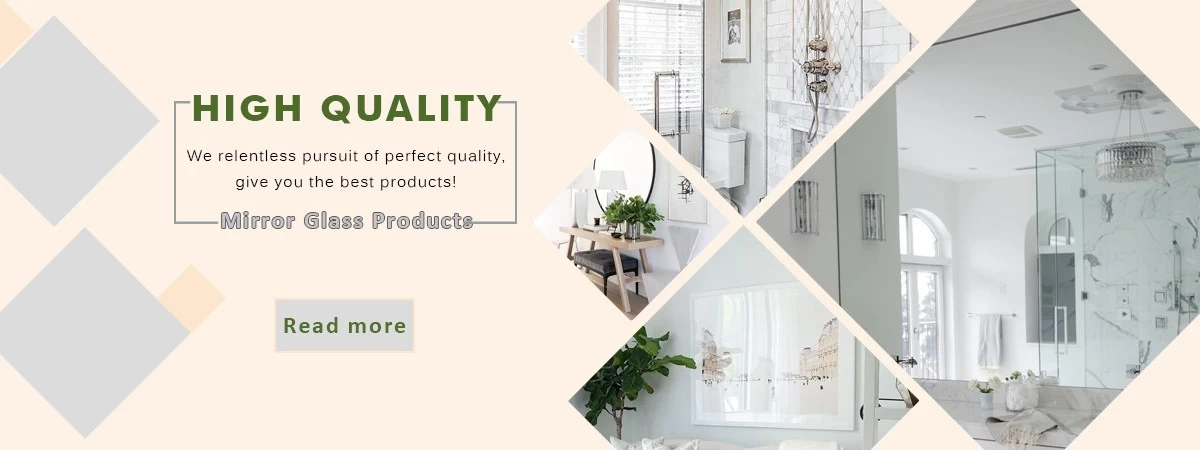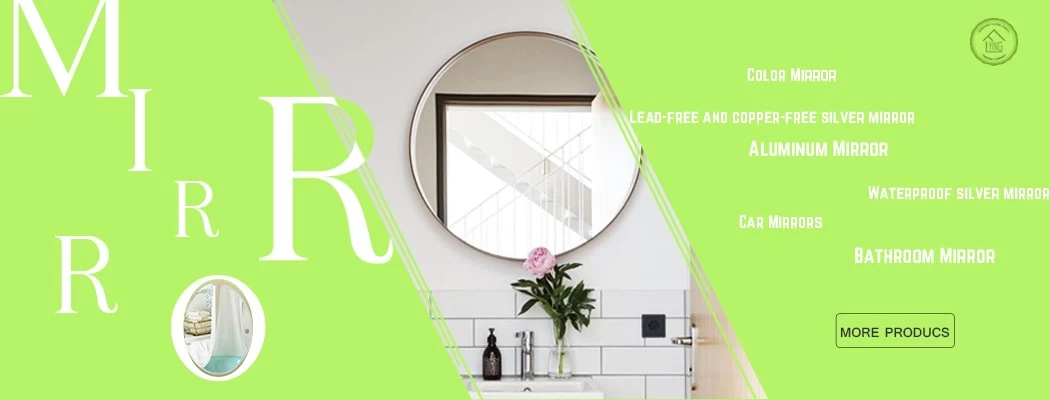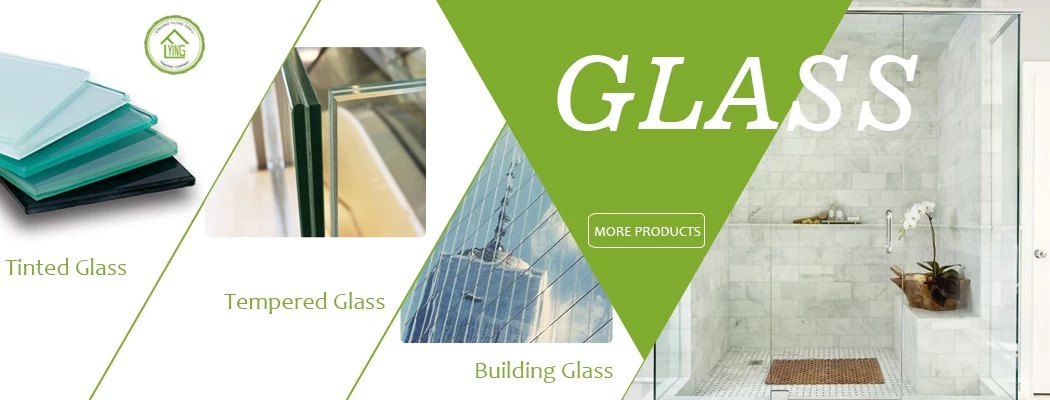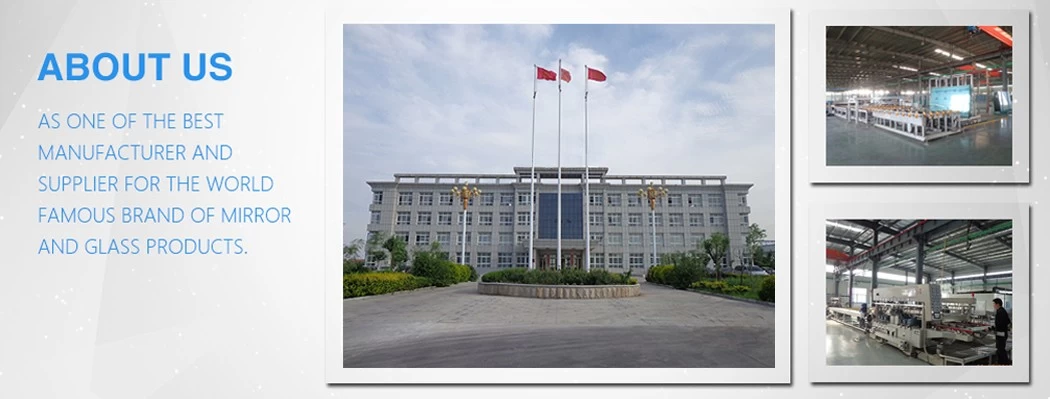Learn about the life of the glass
Fanyu
Https://www.glass.com.cn
2019-05-10 15:15:15
Usually only two conditions affect the life of the door and window glass, humid air and high temperature. Persistent moist air can cause mildew in the glass, but at room temperature, the mildew of the glass is very slow, usually takes several months, and there are few humid air that lasts for several months under normal use. Therefore, the glass will not be mildewed when exposed to the air. The mildew of glass generally occurs in the process of overlapping glass storage. The glass is prone to mildew after being stored in a wet warehouse or in the open air. The original glass without tempering is more susceptible to mildew than tempered glass.
Tempered glass life
Physical tempering is to heat and quench the glass, changing the structure between the molecules and molecules inside the glass; chemical tempering is to ion exchange the molecular structure of the glass surface at high temperature; both methods change the microscopic of the glass material. structure. Therefore, unless there is high temperature and strong chemical action, the characteristics of the tempering will not attenuate or change with time under normal use.
Insulating glass life
Insulating glassIt is a combination of glass substrate, spacer frame (aluminum strip), desiccant (molecular sieve), sealing material (butyl rubber, polysulfide rubber or structural adhesive). In the construction of insulating glass, glass and aluminum frames are generally very stable, and the life of the insulating glass depends on the life of the molecular sieve and the sealing material. Due to changes in ambient temperature, the gas in the hollow cavity is always in an expanded or compressed state, so that the insulating glass sealing system is always under stress, and the ultraviolet, water and moisture in the environment will accelerate the aging of the sealing system, resulting in The water vapor accelerates into the hollow cavity. When a large amount of water vapor appears in the hollow glass cavity, the insulating glass fails, and the failure of the insulating glass means that the service life of the insulating glass is terminated. The key to ensuring that the insulating glass does not fail is the desiccant and sealing material.
Regarding the life of insulating glass, the early Chinese glass enterprises gave the concept of 10-year warranty period with reference to the American standard; in the insulating glass national standard GB/T11944-2012, a reference convention was proposed for the life of insulating glass, and The concept of life expectancy should be greater than 15 years." In fact, the life of the insulating glass has a close relationship with the selection and processing technology of the insulating glass material, and is also affected by many factors such as the composition of the insulating glass plate and the use environment, which is difficult to quantify. For insulating glass that has been installed on a wall, the simpler measure is actually measuring the dew point or spacer air humidity.
Low-E glass life
The life of Low-E glass depends primarily on the life of the hollow sealing system in which it is located. We know that the main constituent materials of the Low-E film layer are metals, alloys, metal oxides and metal nitrides. Metal nitrides are generally used as a protective layer in a film structure, and their properties are very stable. The metal oxide and alloy layers generally connect the silver layer and the protective layer as a dielectric layer in the film layer, and the properties thereof are also relatively stable. The silver layer in Low-E is relatively active, but its oxidation is conditional and requires water vapor. Therefore, as long as the insulating glass does not fail, it is basically unnecessary to separately consider the life of the Low-E film layer.
Laminated glass life
Laminated glass is a composite glass product in which two or more organic polymer interlayer films are sandwiched between glass and processed to form a film in which the glass and the interlayer film are bonded together. The laminated glass will be stuck to the film even if the glass is broken, which effectively prevents the occurrence of debris pitting and penetrating fall events, and ensures personal safety.
The life of laminated glass depends mainly on the material of the interlayer in the interlayer. Normally, wet laminated glass and EVA laminated glass are mainly used for indoor partitions, and are not suitable for building doors and windows or curtain walls. Wet laminated glass will accelerate aging under sunlight, and yellowing will occur after 1-2 years. Degumming bubbles, ice and fog will appear in 2-3 years. In general, wet laminated glass ages much faster than EVA laminated glass. EVA laminated glass can be used indoors for more than 10 years without direct sunlight.
PVB and SGP laminated glass, which is commonly used as a door or window or curtain wall, has much better aging resistance. The typical failure of laminated glass PVB and SGP is the opening of the glue. Opening the glue means that the glass and the spacer layer are disengaged, losing the safety characteristics of the laminated glass. Regarding the life of PVB and SGP laminated glass, there are currently no relevant standards and specifications in China. At present, domestic glass processing enterprises generally give 5-7 years product warranty period with reference to foreign PVB and SGP supplier related materials.
In fact, the life of PVB and SGP laminated glass is greatly affected by the thickness of the interlayer layer, the quality of the laminated glass substrate, and the process control of the laminated glass, in addition to the influence of the material of the intermediate layer.
Tempered glass life
Physical tempering is to heat and quench the glass, changing the structure between the molecules and molecules inside the glass; chemical tempering is to ion exchange the molecular structure of the glass surface at high temperature; both methods change the microscopic of the glass material. structure. Therefore, unless there is high temperature and strong chemical action, the characteristics of the tempering will not attenuate or change with time under normal use.
Insulating glass life
Insulating glassIt is a combination of glass substrate, spacer frame (aluminum strip), desiccant (molecular sieve), sealing material (butyl rubber, polysulfide rubber or structural adhesive). In the construction of insulating glass, glass and aluminum frames are generally very stable, and the life of the insulating glass depends on the life of the molecular sieve and the sealing material. Due to changes in ambient temperature, the gas in the hollow cavity is always in an expanded or compressed state, so that the insulating glass sealing system is always under stress, and the ultraviolet, water and moisture in the environment will accelerate the aging of the sealing system, resulting in The water vapor accelerates into the hollow cavity. When a large amount of water vapor appears in the hollow glass cavity, the insulating glass fails, and the failure of the insulating glass means that the service life of the insulating glass is terminated. The key to ensuring that the insulating glass does not fail is the desiccant and sealing material.
Regarding the life of insulating glass, the early Chinese glass enterprises gave the concept of 10-year warranty period with reference to the American standard; in the insulating glass national standard GB/T11944-2012, a reference convention was proposed for the life of insulating glass, and The concept of life expectancy should be greater than 15 years." In fact, the life of the insulating glass has a close relationship with the selection and processing technology of the insulating glass material, and is also affected by many factors such as the composition of the insulating glass plate and the use environment, which is difficult to quantify. For insulating glass that has been installed on a wall, the simpler measure is actually measuring the dew point or spacer air humidity.
Low-E glass life
The life of Low-E glass depends primarily on the life of the hollow sealing system in which it is located. We know that the main constituent materials of the Low-E film layer are metals, alloys, metal oxides and metal nitrides. Metal nitrides are generally used as a protective layer in a film structure, and their properties are very stable. The metal oxide and alloy layers generally connect the silver layer and the protective layer as a dielectric layer in the film layer, and the properties thereof are also relatively stable. The silver layer in Low-E is relatively active, but its oxidation is conditional and requires water vapor. Therefore, as long as the insulating glass does not fail, it is basically unnecessary to separately consider the life of the Low-E film layer.
Laminated glass life
Laminated glass is a composite glass product in which two or more organic polymer interlayer films are sandwiched between glass and processed to form a film in which the glass and the interlayer film are bonded together. The laminated glass will be stuck to the film even if the glass is broken, which effectively prevents the occurrence of debris pitting and penetrating fall events, and ensures personal safety.
The life of laminated glass depends mainly on the material of the interlayer in the interlayer. Normally, wet laminated glass and EVA laminated glass are mainly used for indoor partitions, and are not suitable for building doors and windows or curtain walls. Wet laminated glass will accelerate aging under sunlight, and yellowing will occur after 1-2 years. Degumming bubbles, ice and fog will appear in 2-3 years. In general, wet laminated glass ages much faster than EVA laminated glass. EVA laminated glass can be used indoors for more than 10 years without direct sunlight.
PVB and SGP laminated glass, which is commonly used as a door or window or curtain wall, has much better aging resistance. The typical failure of laminated glass PVB and SGP is the opening of the glue. Opening the glue means that the glass and the spacer layer are disengaged, losing the safety characteristics of the laminated glass. Regarding the life of PVB and SGP laminated glass, there are currently no relevant standards and specifications in China. At present, domestic glass processing enterprises generally give 5-7 years product warranty period with reference to foreign PVB and SGP supplier related materials.
In fact, the life of PVB and SGP laminated glass is greatly affected by the thickness of the interlayer layer, the quality of the laminated glass substrate, and the process control of the laminated glass, in addition to the influence of the material of the intermediate layer.






